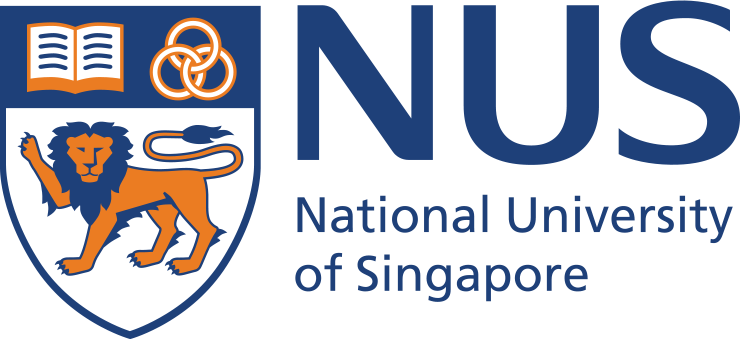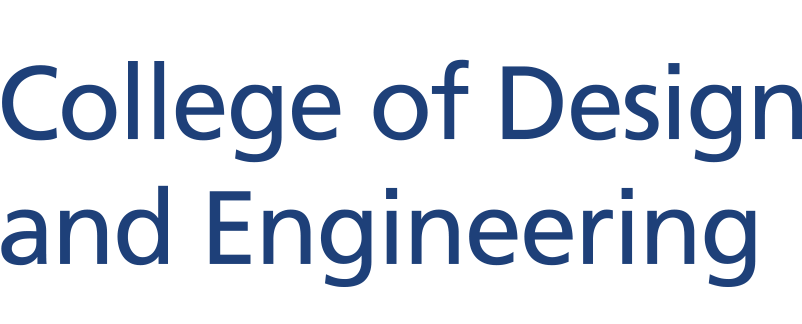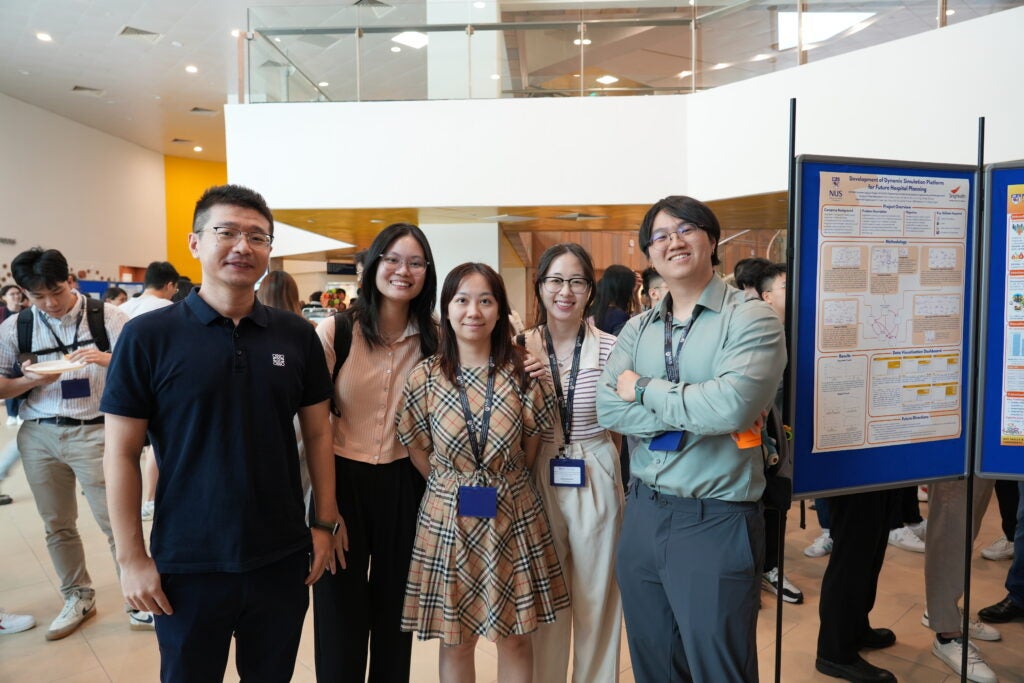When Singapore’s largest public healthcare cluster, SingHealth, looked for ways to plan its future hospitals, a team of final-year students from NUS’s Department of Industrial Systems Engineering and Management (ISEM) stepped up to the challenge. Their task: to build a tool that could help healthcare planners anticipate and prepare for the demands of Singapore’s evolving population.
The result was more than just a student project. It was an award-winning dynamic simulation platform — and it earned First Prize in the Poster Competition (Engineering in Healthcare category) at the Singapore Healthcare Management 2025 Conference.

From left to right: Dr Wang Zhiguo (NUS Supervisor), Lu Yuting, Zhang Guoyun (Team Leader), Chen Chwen Huey, Jon Tan Ee Xin
A Systems Design Project with Real-World Impact
The project was part of ISEM’s flagship Systems Design Project (SDP), where students work with industry partners on complex, real-world problems. SDP Group 14 from AY 2024/2025 — Chen Chwen Huey, Jon Tan Ee Xin, Lu Yu Ting, and team leader Zhang Guoyun — collaborated with SingHealth supervisors Adj A/Prof Sean Lam and Dr. Ashish Kumar, and were guided by academic advisor Dr. Wang Zhiguo. The SDP coordinator, Dr. Bok Shung Hwee, also provided important support throughout the process.
Their mission was to help SingHealth plan for the long-term capacity of hospitals, as Singapore faces both an ageing population and the need to build new hospitals in the coming decades.
To do this, the team developed a dynamic simulation platform using Stella Architect. The platform models population growth, forecasts demand for hospital services, and simulates the adoption of alternative models of care (AMoC) such as telemedicine and hospital-at-home.
At the heart of their work is an interactive dashboard that allows planners to run what-if analyses. By adjusting key parameters like immigration policy, staff-to-patient ratios, or AMoC adoption rates, planners can immediately see how different scenarios impact healthcare demand and resources.
Why This Project Stood Out
What made this project special was how the students combined complex ideas with simple, practical tools. They used a well-known “S-curve” model to predict how quickly new care models, like telemedicine, might be adopted by patients. This gives planners a clearer picture of how innovations can reduce pressure on hospitals over time.
The team also worked hard to make their tool user-friendly. Instead of just producing numbers, they built a clear and interactive dashboard where hospital planners can test different policies and see the results instantly. This focus on ease of use — while still being grounded in solid research — is what impressed the judges.
That balance between academic learning and practical application earned the students First Prize at the Singapore Healthcare Management Conference.
Adj A/Prof Sean Lam reflected on the achievement, “The students’ ability to integrate theoretical knowledge with practical application has resulted in a project that is both academically rigorous and industrially relevant. Their success shows how industry-academia collaboration can deliver meaningful solutions.”
Beyond an Award
For the students, the project was more than just about winning a prize. It was about contributing to a national challenge — how Singapore will provide sustainable, high-quality healthcare in the decades ahead.
For ISEM, this project underscores the value of the SDP program. It shows how experiential learning — where students apply systems engineering principles to real-world contexts — not only deepens learning but also delivers outcomes that benefit industry and society.
View our past SDP projects here.


